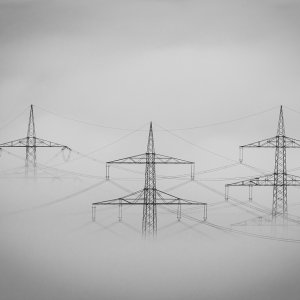
Public-Private Collaboration for a Competitive Electricity System
 By Antonio Gozain | Senior Journalist and Industry Analyst -
Wed, 03/01/2023 - 17:42
By Antonio Gozain | Senior Journalist and Industry Analyst -
Wed, 03/01/2023 - 17:42
Amid a growing energy demand, Mexico has an urgent need to transform its electricity sector to meet the current challenges and take advantage of opportunities, while reducing carbon emissions and maintaining the country’s economic competitiveness. However, this transformation cannot be achieved by the government alone: a collaborative effort between the public and private sectors is crucial.
“The electricity sector is facing a significant challenge and it requires the collaboration of both public and private sectors to address it. In the recent past, the motivation behind opening the energy sector to private investment was the lack of public resources and the need for financial and technological resources to meet the energy demand,” said Abraham Zamora, President, the Mexican Energy Association (AME).
AME is a non-profit organization established in 1956 to promote and advance the energy sector in Mexico. Its members include individuals, companies and institutions with an interest in the energy industry, including electricity, hydrocarbons and renewable energy. Currently, AME represents 17 leading companies in power production and 11 affiliates, including natural gas transporters and engineering companies, among others.
The accumulated installed capacity of AME’s associates is more than 33,000MW. This represents 81% of the total privately installed capacity in the country, said Zamora. AME plays an essential role in promoting dialogue and collaboration between different stakeholders within the energy sector, including the public and private sectors, academia and civil society.
“We can improve the public perception of the electricity sector in Mexico. The relocation of investments and supply chains presents a unique opportunity for the country to attract FDI but we need an efficient and not a bottleneck,” said Zamora.
Mexico captured US$32 billion in FDI during the first nine months of 2022, representing a 29.5% increase compared to the same period in 2021, as reported by MBN. The
manufacturing industry, including the automotive sector, was the most influential sector, with the US and Canada as the two biggest commercial partners.
According to the Inter-American Development Bank, the potential profit from nearshoring in Mexico in the short and medium term is US$35 billion. However, “while FDI increased by 30% in 4Q22, from the total investments, only 7% went to electricity. To capitalize on nearshoring, Mexico must offer competitive electricity rates compared to the US. Every dollar is an important competitive factor,” said Zamora.
The Importance of Energy Security in the Transition to Renewable Energy
Energy security is an essential factor to consider during the energy transition. As countries shift toward renewable energy sources, there is a risk of intermittent energy supply, which can create energy security issues.
To ensure a smooth energy transition, energy security must be given the same level of importance as the transition itself, said Zamora. “The debate around the energy transition is gaining steam. This has become significant in the geopolitical context. While transitioning to cleaner energy is crucial, it must be equally balanced with reliability and energy security,” he clarified.
As Mexico prepares for a change of government in 2024, the electricity sector must position itself well in the public narrative, said Zamora: “The sector must promote its role in driving economic growth, creating jobs and meeting the energy needs of all consumers while also embracing sustainable practices.”















